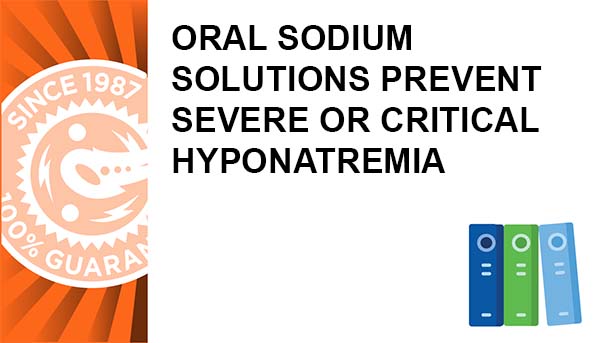By William Misner Ph.D.
A protein food strength or weakness is based on the quality and quantity of its essential amino acid profile for healthful growth effects. For example, soy protein generates known cardiovascular benefits, while whey protein reproduces significant muscle growth effects. Protein quality may therefore be judged by its essential amino acid yield per serving. The body cannot make essential amino acids for itself and is therefore dependent upon dietary sources.
| ESSENTIAL AMINO ACIDS MILLIGRAMS PER 26 GRAMS | ||
| AMINO ACID | SOY | WHEY |
| LEUCINE | 1546 | 2609 |
| ISOLEUCINE BCAA | 921 | 1333 |
| VALINE BCAA | 940 | 942 |
| METHIONINE | 245 | 443 |
| ARGININE | 1428 | 480 |
| HISTIDINE | 489 | 425 |
| LYSINE | 1184 | 2222 |
| PHENYLALANINE | 977 | 831 |
| TRYPTOPHAN | 595 | 244 |
| TOTALS | 9039 | 10491 |
Non-essential amino acids are also beneficial for replacing exercise-cannibalized amino acids from muscle mass. Therefore, the amino acid profile for soy and whey may also be compared in terms of their non-essential amino acids donor potency:
| AMINO ACIDS MILLIGRAMS PER 26 GRAMS | ||
| AMINO ACID | SOY | WHEY |
| CYSTEINE | 244 | 869 |
| ASPARTIC ACID | 2180 | 2039 |
| ALANINE | 808 | 230 |
| GLUTAMIC ACID | 3589 | 2683 |
| GLYCINE | 789 | 78 |
| PROLINE | 940 | 179 |
| SERINE | 977 | 180 |
| TYROSINE | 714 | 172 |
| TOTALS | 10241 | 6430 |
These values represent individual amino acid content in soy and whey.
Next, compare soy and whey to other protein sources: human milk, eggs, and cow milk, beef:
| COMPARISON OF AMINO ACID PROFILES IN COMMON PROTEINS [2] AMINO ACID (mg AA/g protein) | ||||||
| Amino Acid | Human Milk | Cow Milk | Egg | Beef | Soy | Whey |
| Histidine | 26 | 27 | 22 | 34 | 19 | 16 |
| Isoleucine BCAA | 46 | 47 | 54 | 48 | 49 | 54 |
| Leucine BCAA | 93 | 95 | 86 | 83 | 82 | 89 |
| Valine BCAA | 55 | 64 | 66 | 50 | 48 | 82 |
| Lysine | 66 | 78 | 70 | 89 | 64 | 88 |
| Methionine | 42 | 33 | 57 | 40 | 26 | 32 |
| Tyrosine | 72 | 102 | 93 | 80 | 92 | 65 |
| Threonine | 4 | 44 | 47 | 46 | 38 | 65 |
| Tryptophan | 17 | 14 | 17 | 12 | 14 | 22 |
| TOTALS | 421 | 504 | 512 | 482 | 432 | 513 |
Blue notes highest amino acid value. Red notes lowest amino acid value. PROTEIN DIGESTIBILITY CORRECTED AMINO ACID SCORE (PDCAAS)Protein growth potency is judged by its weakest essential amino acid. The PDCAAS classifies protein quality for humans based on the amino acid requirements the most demanding age group (2-to-5-years) and is adjusted for digestibility. Only three proteins are considered "Complete" based on their PDCAAS score:
| PROTEIN | PDCAAS |
| WHEY | 1.0 |
| SOY | 1.0 |
| EGG | 1.0 |
| Grains & Legumes | 1.0 |
| Grains & Vegetables | 1.0 |
| Grains, Nuts, & Seeds | 1.0 |
| Rice & Peas | 1.0 |
| Legumes, Nuts, & Seeds | 1.0 |
| Beef | 0.92 |
| Rice + Milk | 0.92 |
| Peas | 0.73 |
| Oats | 0.57 |
| Peanuts | 0.52 |
| Rice | 0.47 |
| Corn | 0.42 |
| Wheat Gluten | 0.25 |
PROTEIN EFFECTS SERUM CHOLESTEROL LEVELS When rabbits were fed various foods then were examined for blood serum cholesterol after 28 days on each protein, the following results in serum cholesterol were reported:
| PROTEIN SOURCE | POSTPRANDIAL SERUM CHOLESTEROL (mmol/l) |
| Soy Protein Isolates | 0.4 |
| Soy Protein Concentrates | 0.6 |
| Peanut Protein | 2.1 |
| Wheat Gluten | 2.1 |
| EGG White (raw) | 2.7 |
| Pork Protein Concentrate | 2.8 |
| Beef Protein Concentrate | 4.1 |
| Casein (MILK) | 5.2 |
| Skim MILK | 5.9 |
| Whole EGG | 6.1 |
AMINO ACIDS ACCESS THE BRAIN, ENERGY LEVELS, MOOD, EMOTION, APPETITE, AND MUSCLE GROWTH HORMONE RELEASE
There are 4 main classes of amino acids. When amino acids from the same class are present simultaneously with others, they compete for entry through the blood-brain barrier. A single free-form amino acid will cross blood-brain barrier with greater potency effect. When, for example, Glutamine, Arginine, Tryptophan, Glycine, and the BCAA's (Leucine, Valine, and Isoleucine) are taken as free form amino acids without having to compete against other amino acids in their class, they have been reported to stimulate maximal hGH release with muscle growth rate increased effects. Each of the 4 classes are listed with their corresponding amino acids:
LARGE NEUTRAL CLASS: Tryptophan Phenylalanine Tyrosine Methionine LeucineBCAA ValineBCAA IsoleucineBCAA
SMALL NEUTRAL CLASS: Asparagine Glutamine Proline Serine
ACIDIC CLASS: Glutamic Aspartic
BASIC CLASS: Arginine Ornithine Lysine
The protein food's amino acid profile affects its biological value. Protein food sources can be consumed together regenerating a complete protein rating PDCAAS 1.0-score. One protein may have a better effect if it is mixed with another based on the strength and weaknesses of its amino acid profile. Only 3 protein amino acid profiles have been rated as "Complete" or with a perfect PDCAAS score of 1.0. "Complete Proteins" are SOY, WHEY, & EGG WHITES. PDCAAS means "Protein Digestibility Corrected Amino Acid Score." An argument can be made for consuming whey protein during strength or speed training cycles, and soy during endurance cardio training cycles keeping the carbohydrates to protein ratio of 3-4 to 1 as total dietary protein of 1.7 grams during speed/strength training, but no more than 1.4 grams/kilogram bodyweight during endurance training cycles. Only small portions of protein should be consumed during exercise, which operate to blunt protein deficits created by exercise. During the first 30 minutes after exercise it is important that the athlete consume a large protein meal of 40 grams with 120-160 grams carbohydrates to refill the lean muscle mass stores for recovery and muscle growth after exercise. Too much dietary protein above 1.7 grams per kilogram body weight is not necessary. It increases the risk of elevating nitrogen, ammonia, urea, dehydration, and increased feelings of malaise from nitrogen toxicity, impacting stress on the liver and kidneys. More is not always better, but balance is always key. [3]
[1] Director Research and Product Development EMG, Whitefish, Montana 1-800-336-1977.
[2] National Research Council. Recommended Dietary Allowances, 10th ed. National Academy Press, 1989; Values for whey hydrosylate are from Boza, JJ et. al. (12) and may vary slightly depending on how the whey is produced; Values for soy isolate (Supro-620) are from Young VR. (13).
[3] Misner, W.D., The Great Hammer Protein Debate: Which Protein Is The Best, How Much And When? THE JOURNAL OF ENDURANCE:2001:#8.










1 comment
Love your products! Since you are now offering Organic Vegan Recoverite, it would be helpful to have the “PROTEIN DEBATE: Which Protein Is Best?” article updated by adding a column for Pea protein. I generally stick to a vegan diet, but want to use the product for the best recovery after hard rides.
Thanks!
———
Hammer Nutrition replied:
Hello Cameron, thank you for your question and longtime support; we appreciate it! Also, thank you for recommending an update to our “Which Protein is Best” article. You are correct; our pea protein definitely could use a little time in the limelight. Be on the lookout for an updated protein article in 2024! – LA